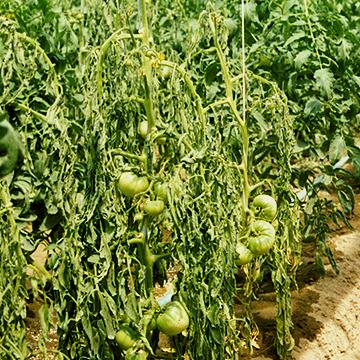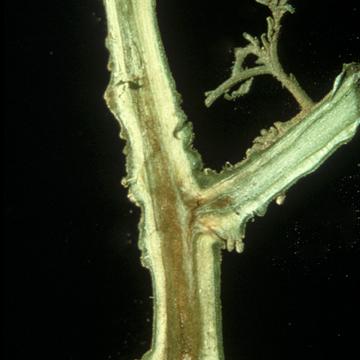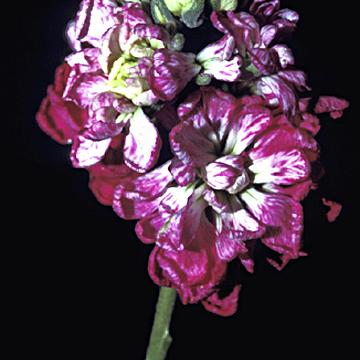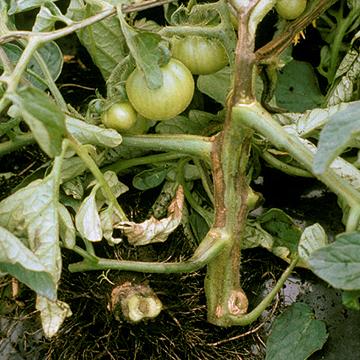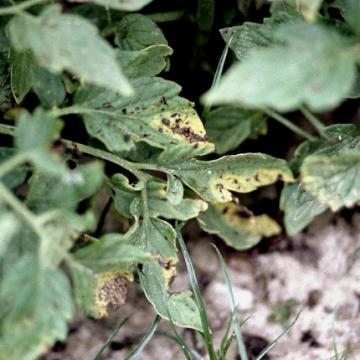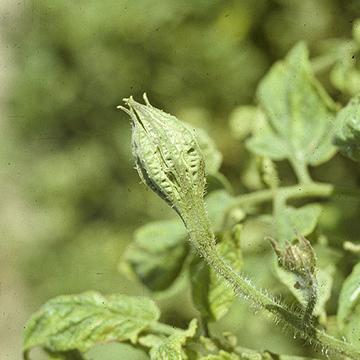DISEASE: Bacterial stem rot
HOST: Tomato
Wilt is first symptom of disease. Later, the pith usually disintegrates, causing hollow and blackened stems.
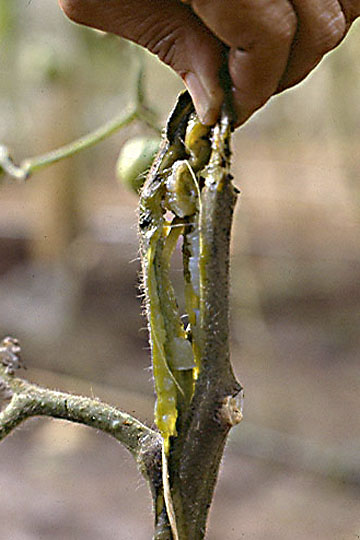
Bacterial stem rot | Tomato
DISEASE: Bacterial stem rot
HOST: Tomato (Lycopersicon esculentum)
PATHOGEN: Pectobacterium atrosepticum
PATHOGEN SYNONYM: Erwinia carotovora subsp. atroseptica
SOURCE: M. Stanghelllini
DISEASE: Bacterial wilt
HOST: Tomato
Severely infected plants in glass house. First symptoms appear as wilt of young leaves. Leaf epinasty may occur.
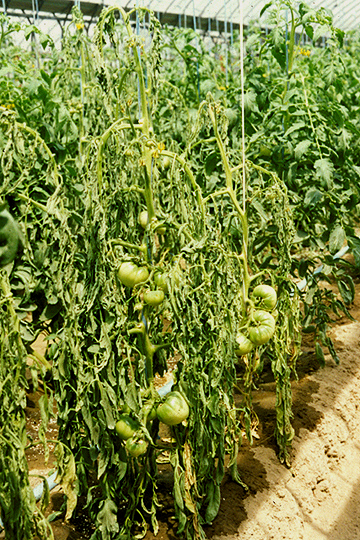
Bacterial wilt | Tomato
DISEASE: Bacterial wilt
HOST: Tomato (Lycopersicon esculentum)
PATHOGEN: Ralstonia solanacearum
PATHOGEN SYNONYM: Pseudomonas solanacearum
SOURCE: M. Goto
DISEASE: Bacterial wilt
HOST: Tomato
Necrotic, brownish, cortical tissues. Massive infection of cortex may result in water-soaked lesions on stem surfaces.
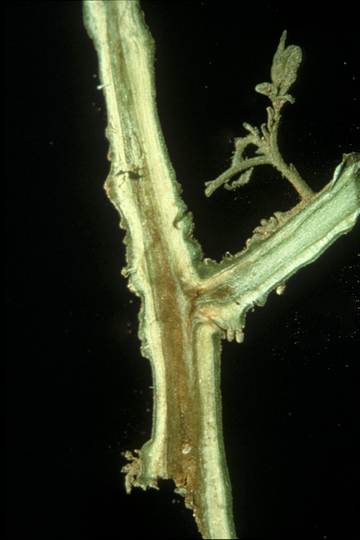
Bacterial wilt | Tomato
DISEASE: Bacterial wilt
HOST: Tomato (Lycopersicon esculentum)
PATHOGEN: Ralstonia solanacearum
PATHOGEN SYNONYM: Pseudomonas solanacearum
SOURCE: A. Hayward
DISEASE: Phytoplasma disease
HOST: Stock
The disease causes malformation and arrested development of flowers.
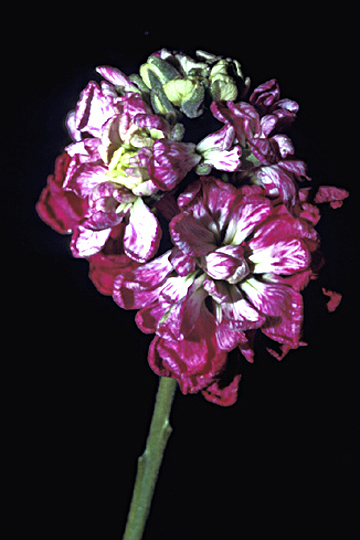
Phytoplasma disease | Stock
DISEASE: Phytoplasma disease
HOST: Stock (Matthiola incana)
PATHOGEN: 'Candidatus Phytoplasma' sp.
PATHOGEN SYNONYM: Phytoplasma (undefined)
SOURCE: R. Raabe
DISEASE: Pith necrosis
HOST: Tomato
Cracked, dry, hollow stems with internal necrosis.
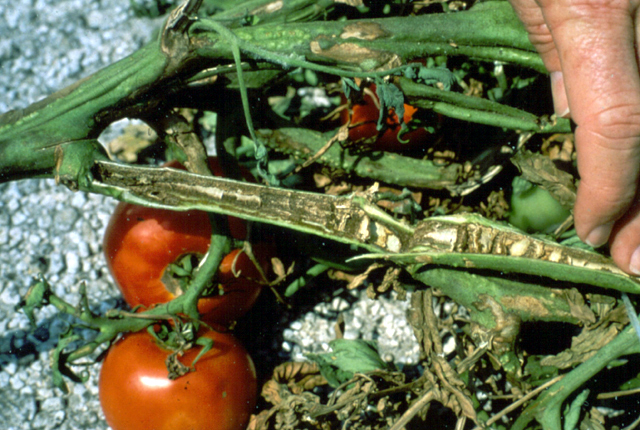
Pith necrosis | Tomato
DISEASE: Pith necrosis
HOST: Tomato (Lycopersicon esculentum)
PATHOGEN: Pseudomonas corrugata
SOURCE: A. Alvarez
DISEASE: Pith necrosis
HOST: Tomato
External necrotic stem tissues. Initial symptoms include chlorosis of young leaves. Wilting may occur when disease is severe.
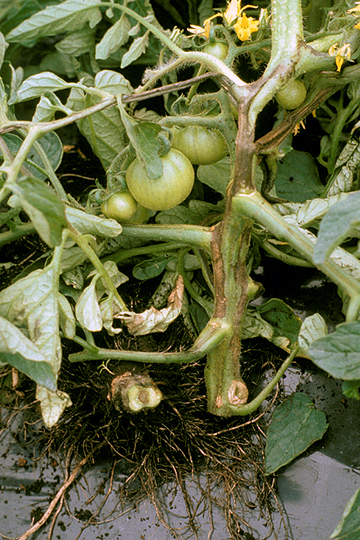
Pith necrosis | Tomato
DISEASE: Pith necrosis
HOST: Tomato (Lycopersicon esculentum)
PATHOGEN: Pseudomonas corrugata
SOURCE: K. Natsuaki, M. Goto
DISEASE: Syringae leaf spot
HOST: Tomato
Leaves with brown necrotic lesions and chlorotic margins. Symptoms vary greatly among cultivars. Some have black or brown lesions with bright yellow, chlorotic areas and others do not have yellowing.

Syringae leaf spot | Tomato
DISEASE: Syringae leaf spot
HOST: Tomato (Lycopersicon esculentum)
PATHOGEN: Pseudomonas syringae pv. syringae
SOURCE: R. Gitaitis
DISEASE: Tomato big bud
HOST: Tomato
Characteristic symptoms are swollen, apical stems and stunted leaves. Apical stems are generally thickened and assume a stiff and erect growth habit. Internodes are shortened and flower buds are greatly enlarged.
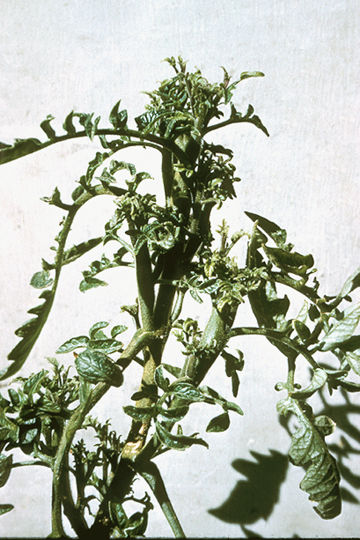
Tomato big bud | Tomato
DISEASE: Tomato big bud
HOST: Tomato (Lycopersicon esculentum)
PATHOGEN: 'Candidatus Phytoplasma asteris'
PATHOGEN SYNONYM: Phytoplasma Aster yellows group
SOURCE: D. Teakle
DISEASE: Tomato big bud
HOST: Tomato
Symptoms are enlarge sepals that do not separate. Flower buds stay green and do not develop into fruit. Leaves are small and chlorotic.
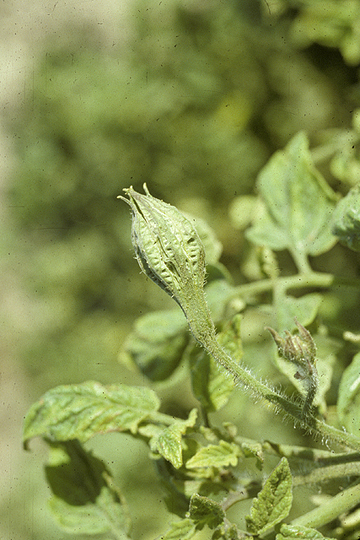
Tomato big bud | Tomato
DISEASE: Tomato big bud
HOST: Tomato (Lycopersicon esculentum)
PATHOGEN: 'Candidatus Phytoplasma asteris'
PATHOGEN SYNONYM: Phytoplasma Aster yellows group
SOURCE: S. Thomson



